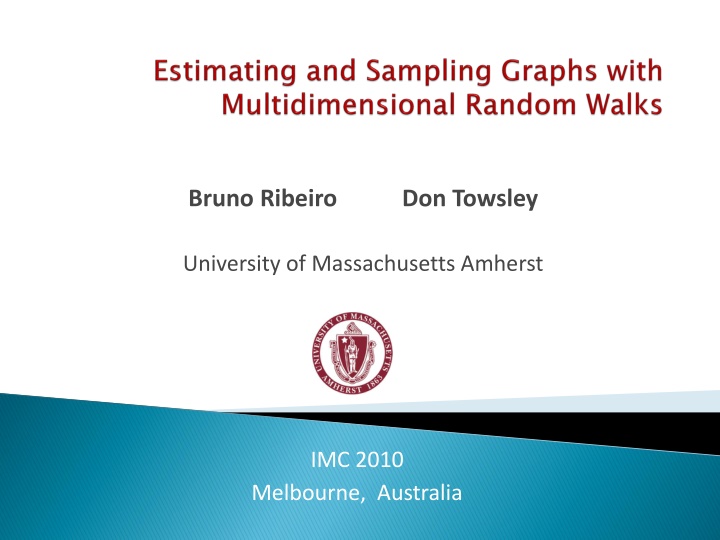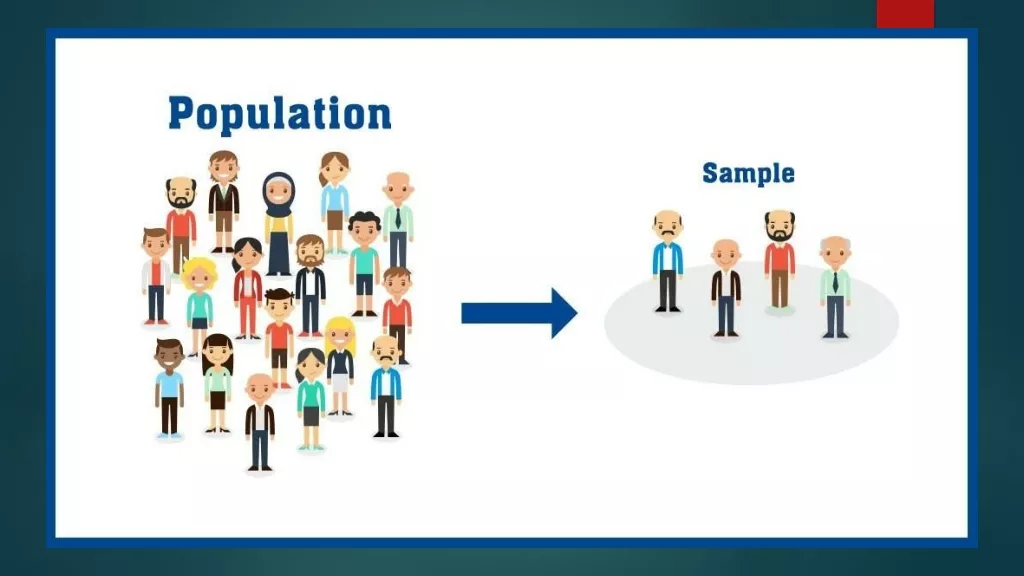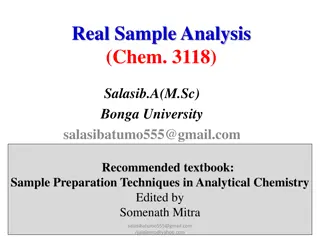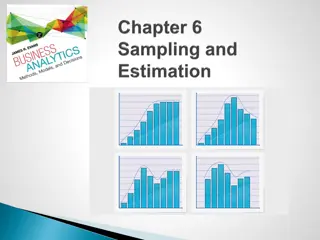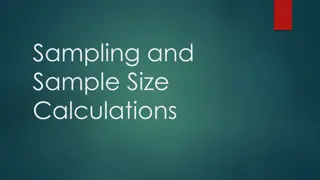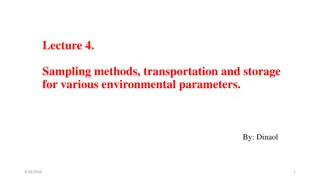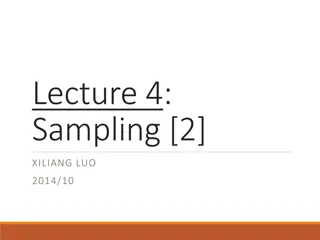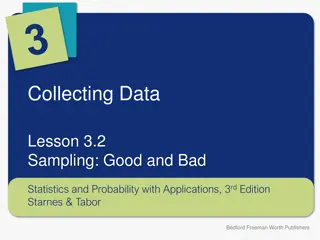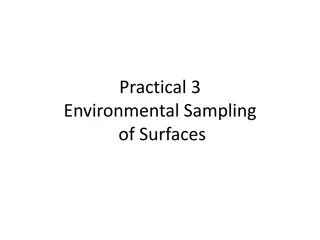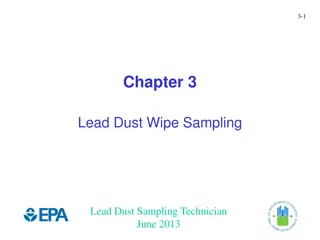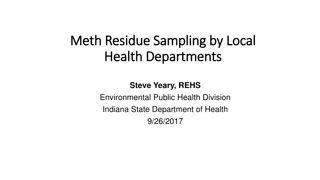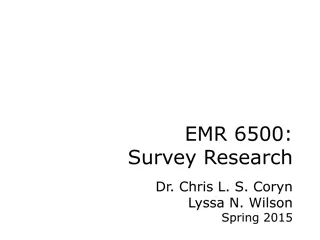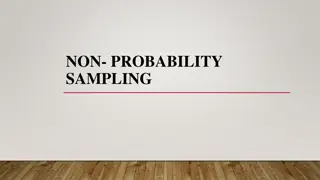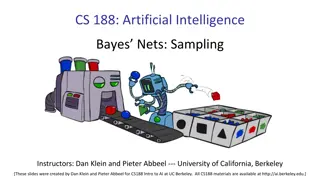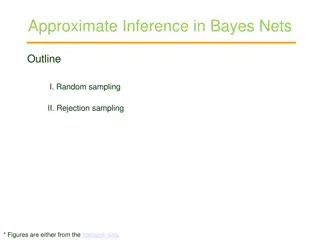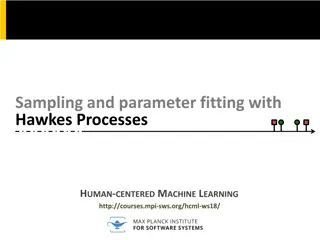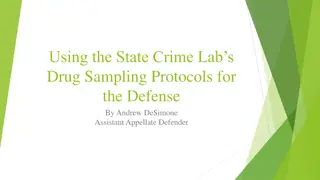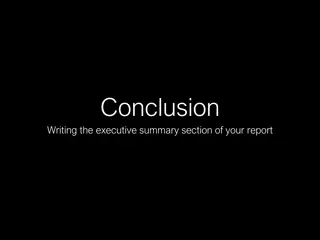Characteristics of Sampling Methods in Social Networks
Demystify sampling methods in social networks through various techniques like random walks, uniform vertex sampling, and edge sampling. Explore how these methods help in evaluating network structures accurately and efficiently across different platforms. Understand the pros and cons of uniform edge and vertex sampling and their impact on large-scale network analysis.
Download Presentation

Please find below an Image/Link to download the presentation.
The content on the website is provided AS IS for your information and personal use only. It may not be sold, licensed, or shared on other websites without obtaining consent from the author.If you encounter any issues during the download, it is possible that the publisher has removed the file from their server.
You are allowed to download the files provided on this website for personal or commercial use, subject to the condition that they are used lawfully. All files are the property of their respective owners.
The content on the website is provided AS IS for your information and personal use only. It may not be sold, licensed, or shared on other websites without obtaining consent from the author.
E N D
Presentation Transcript
Bruno Ribeiro Don Towsley University of Massachusetts Amherst IMC 2010 Melbourne, Australia
sample of Twitter network measure characteristics of social networks in the wild 2
World Map in 1459 proved incomplete (Columbus et al. 1492) (Australia 17th century) wrong proportions (Africa & Asia) The Fra Mauro world map (1459) 3 source: Wikipedia
methods to sample graphs (online social networks) uniform vertex sampling v.s. uniform edge sampling random walks our contribution (Frontier sampling random walk) results 4
random sampling (uniform & independent) crawling vertex sampling BFS sampling edge sampling random walk sampling 5 5
uniform vertex sampling i- fraction of vertices with degree i vertex with degree i is sampled with probability i uniform edge sampling i- probability that a vertex with degree i is sampled i= ix i / <average degree> v u estimating ifrom i (uniform edge) : trivial to remove bias 6
estimate: i- fraction of vertices with degree i ; budget:B samples accuracy metric: Normalized root Mean Squared Error uniform vertex uniform edge , 7
Flickr graph (1.7 M vertices, 22M edges) head: GOOD tail: BAD sampling budget: B = |V|/100 samples avg. degree uniform vertex BAD GOOD uniform edge head: BAD tail: GOOD vertex degree 8
uniform edge uniform vertex pros: independent sampling OSN needs numeric user IDs. E.g.: Livejournal, Flickr, MySpace, Facebook,... cons: resource intensive (sparse user ID space) difficult to sample large degree vertices pros: independent sampling easy to sample large degree vertices cons: no public OSN interface to sample edges difficult to sample small degree vertices 9
start at v randomly selects a neighbor of v ... until B samples vertices can be sampled multiple times often (resource-wise) cheaper than uniform vertex sampling graph should be connected multiple RWs: m independent walkers to capture B/m samples 10
i i fraction of vertices with degree i distribution observed by RW P[sampled degree = i] i i P[X > x] CCDF true distribution in steady state samples edges uniformly (only if graph connected) RW sampling RW = uniform edge sampling without independence (i) x = degree (log-scale) 11
uniform edge RW uniform vertex pros: independent sampling supported by OSNs with numeric user IDs: Livejournal, Flickr, MySpace, Facebook,... cons: resource intensive (sparse user ID space) difficult to sample large degree vertices pros: independent sampling easy to sample high degree vertices resource-wise cheap cons: graph must be connected large estimation errors when graph loosely connected should start in steady state (discard transient samples, but transient is unknown) 12
A B uniform vertex samples both A and B subgraphs but is expensive combine advantages of uniform vertex & RWs? RW samples either A or B but is cheap 13
design a RW that in steady state samples edges uniformly (importance sampling) & initialize steady state w/ uniform vertex sampling in steady state we want to sample vertices proportional to degree to start with uniformly sampled vertices 14
B sampling budget Let S ={v1, v2, , vm}be a set of m vertices (1) select vr S w.p. deg(vr) (2) walk one step from vr (3) add walked edge to E and updatevr (4) return to (1) (until m + |E | = B) 16
Gm = m-th Cartesian power of G j,j j,u u,j j j = u u j,k u,u k,j u,k k,u k k k,k = G2 G G Frontier sampling random walk on Gm 17
when in steady state (m ) uniform vertex distribution FS state at step k: Sk=(v1, v2, ... , v ) FS state at step k+1: Sk+1=(v1, u2, ... , v ) v2, u2chosen proportional to their degrees samples edges uniformly (like a RW) m number of walkers in v V is uniformly distributed (uniform vertex sampling) 18
Flickr: 1.7M vertices, 22M edges Plot evolution (n) , where n = number of steps 4 sample paths = 4 curves 19
2 Albert-Barabasi graphs (5x105 vertices) w/ avg. deg. 2 and 10 connected by 1 edge AB 2 AB 10 1 edge 20
assortativity => measure of degree correlation between neighboring vertices global clustering coefficient assortativity: FS consistently better global clustering coefficient: all RWs do well 21
RW cannot start close to steady state FS steady state close to uniform vertex sampling (m >> 1) 22
Estimating and Sampling Graphs with Multidimensional Random Walks 23
A RW that can jump to a randomly chosen vertex Improving Random Walk Estimation Accuracy with Uniform Restarts, (with Konstantin Avrachenkov (INRIA) and Don Towsley (UMASS) ), WAW 2010 Shorter mixing time Smaller estimation error trivial extension: Frontier sampling with random jumps 24
centrally coordinated but can be easily made distributed at no cost Distributed FS: independent multiple RWs virtual budget B for each walker at step i reduce budget by X exp(deg(vi)) (vi - RW vertex at step i) no communication cost virtual budget B # of samples 25
large connected component of Flickr graph estimate complimentary cumulative distribution (CCDF) metric of accuracy: vertex degree 26
